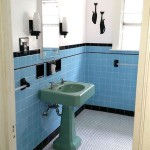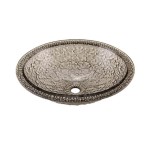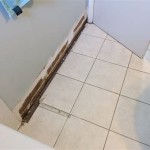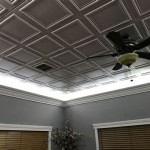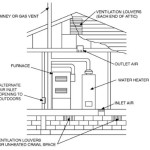Can Two Bathroom Sinks Connect to One Drain?
The question of whether two bathroom sinks can connect to a single drain is a common one during bathroom renovations or new construction. The answer, in short, is yes, it is generally permissible and practical to connect two bathroom sinks to one drain. However, adhering to proper plumbing codes and best practices is essential to ensure the system functions effectively and avoids potential problems such as clogs, slow drainage, and sewer gas backflow.
The practice of connecting two sinks to a single drain is frequently observed in master bathrooms, where double vanities are increasingly popular. This configuration allows for simultaneous use by two individuals, enhancing convenience and functionality. However, simply connecting the two drain pipes without consideration for proper venting, pipe sizing, and drain design could lead to significant plumbing issues down the road. Therefore, a thorough understanding of the underlying principles and regulations is necessary before proceeding with such an installation.
The installation of a dual-sink setup that connects to a single drain involves several key components, each with a specific function. These include the sink tailpieces, P-traps, waste arm, tee fitting or double fixture fitting, drain pipe, and vent system. Each of these components must be appropriately sized and installed to ensure proper water flow and prevent the escape of sewer gases into the living space. Moreover, local plumbing codes often dictate specific requirements for these components, which must be strictly followed to ensure compliance and safety.
Understanding the Plumbing Requirements
Successful connection of two bathroom sinks to a single drain hinges on a few critical plumbing requirements. These include adequate pipe size, proper venting, and the appropriate type of drain fitting. The pipe size is crucial for handling the combined flow of water from both sinks. Insufficient pipe diameter can lead to slow drainage and increase the risk of clogs. Venting is essential for maintaining atmospheric pressure in the drain system, allowing water to flow freely and preventing sewer gases from entering the building.
Pipe sizing is dictated by plumbing codes based on the number of drainage fixture units (DFU) served. Each plumbing fixture, including sinks, is assigned a DFU value that represents its relative drainage load. For example, a typical bathroom sink is assigned a DFU of 1.0. Therefore, two sinks connecting to a single drain would have a combined DFU of 2.0. The drain pipe must be sized appropriately to accommodate this load. A 1 1/2-inch drain pipe is commonly used for bathroom sinks, and this size is generally sufficient for handling the drainage from two sinks. However, in some jurisdictions, particularly those with older plumbing codes, a 2-inch drain pipe may be required, especially if the drain line also serves other fixtures.
Proper venting is equally critical. The vent system allows air to enter the drainpipe, preventing a vacuum from forming as water flows. This vacuum can siphon water from the P-traps of nearby fixtures, leading to sewer gas infiltration. Each fixture connected to the drain system must be properly vented to prevent this from occurring. In the case of two sinks connected to a single drain, a common vent configuration involves a single vertical vent pipe extending from the drain line between the two sinks. This vent must connect to the main vent stack or a branch vent that leads to the outside of the building.
The type of drain fitting used to connect the two sinks to the single drain is also important. A tee fitting or a double fixture fitting is commonly used for this purpose. A tee fitting is a simple fitting with one inlet and two outlets, while a double fixture fitting is specifically designed to connect two fixtures to a single drain. Double fixture fittings often provide better flow characteristics and reduce the risk of clogs compared to simple tee fittings. The choice of fitting will depend on the specific layout of the plumbing and the space available.
Best Practices for Installation
Even with a solid understanding of the requirements, following best installion practices when connecting two bathroom sink to one drain is paramount for a long-lasting and problem-free system. These practices encompass aspects from material choices to the physical assembly of the drain lines.
Choosing the right materials is crucial for the longevity and reliability of the drainage system. PVC (Polyvinyl Chloride) and ABS (Acrylonitrile Butadiene Styrene) are commonly used materials for drainpipes due to their durability, resistance to corrosion, and ease of installation. When selecting fittings and pipes, it is essential to ensure that they are compatible and comply with local plumbing codes. It is also advisable to use a high-quality PVC or ABS cement to ensure a watertight seal at all joints. Avoid mixing PVC and ABS components, as they are not designed to be joined together and can lead to leaks.
Proper slope of the drain lines is essential for ensuring efficient drainage. The drainpipe should have a slight downward slope towards the main drain to allow gravity to facilitate water flow. A general rule of thumb is to maintain a slope of at least 1/4 inch per foot of pipe. This slope ensures that water flows freely through the drainpipe, preventing buildup and potential clogs. Excess slope can also be problematic, as it can cause water to flow too quickly, leaving solids behind and contributing to clogs.
The placement of the P-traps is another crucial consideration. The P-trap is a U-shaped pipe that holds a small amount of water, creating a seal that prevents sewer gases from entering the building. Each sink must have its own P-trap installed directly below the drain opening. The distance between the sink drain opening and the P-trap should be kept as short as possible to prevent the accumulation of debris. The P-trap should also be accessible for cleaning in case of clogs. Installing cleanouts, which are fittings with removable plugs, near the P-traps can facilitate easy access for cleaning and maintenance.
During the installation process, it is important to ensure that all connections are watertight and secure. Apply PVC or ABS cement to all joints and ensure that the fittings are properly aligned before pressing them together. Use appropriate tools, such as pipe cutters and deburring tools, to prepare the pipes for joining. After the installation is complete, test the system for leaks by running water into both sinks simultaneously and carefully inspecting all connections for any signs of leakage. Address any leaks immediately to prevent water damage and potential mold growth.
Potential Problems and Solutions
Despite careful planning and installation, certain problems can arise when connecting two bathroom sinks to a single drain. Common issues include slow drainage, clogs, and sewer gas odors. Understanding the causes of these problems and implementing appropriate solutions is essential for maintaining a functional and healthy plumbing system.
Slow drainage can be caused by a variety of factors, including inadequate pipe size, insufficient slope, or partial clogs in the drainpipe. If the drainpipe is undersized, it may not be able to handle the combined flow of water from both sinks, resulting in slow drainage. Similarly, if the drainpipe does not have adequate slope, water may drain sluggishly, leading to buildup and potential clogs. Partial clogs can also restrict water flow, causing slow drainage. To address slow drainage, it is important to first inspect the drainpipe for any obstructions. A plumbing snake or auger can be used to clear any clogs. If the pipe size or slope is inadequate, it may be necessary to replace the drainpipe with a larger diameter pipe or adjust the slope.
Clogs are a common problem in drain systems, particularly in bathroom sinks where hair, soap scum, and toothpaste can accumulate over time. Clogs can cause slow drainage or even complete blockage of the drainpipe. Regular maintenance can help prevent clogs from forming. This includes flushing the drainpipe with hot water after each use and periodically using a drain cleaner to dissolve any buildup. If a clog does occur, it can often be cleared using a plunger or a plumbing snake. For more persistent clogs, it may be necessary to disassemble the drainpipe and manually remove the obstruction.
Sewer gas odors can be a sign of a more serious problem in the drain system. Sewer gases, which are harmful and unpleasant, can enter the building if the P-traps are not properly sealed or if the vent system is not functioning correctly. If sewer gas odors are detected, it is important to first check the P-traps to ensure that they contain water. If the P-traps are dry, it may be necessary to add water to restore the seal. If the problem persists, it could be a sign of a venting issue. A clogged or improperly installed vent pipe can prevent air from entering the drainpipe, causing a vacuum that siphons water from the P-traps. Inspect the vent system for any obstructions or damage and ensure that it is properly connected to the main vent stack or a branch vent.
In some cases, the problem may be more complex and require the assistance of a professional plumber. A plumber can use specialized tools and techniques to diagnose and repair plumbing problems, such as video inspection to identify hidden clogs or leaks. They can also ensure that the drain system is properly vented and meets all local plumbing code requirements.
Ultimately, the decision to connect two bathroom sinks to a single drain is a viable option that can enhance the functionality and convenience of a bathroom. However, careful planning, adherence to plumbing codes, and proper installation techniques are essential for ensuring a successful outcome. By understanding the plumbing requirements, following best practices, and addressing potential problems proactively, homeowners can enjoy a reliable and problem-free drainage system for their dual-sink setup.

Plumbing Can I Hook Up A Double Bathroom Sink To Single Drain Quora
Plumbing Can I Hook Up A Double Bathroom Sink To Single Drain Quora

Converting Double Sink To Single Bathroom Plumbing Diagram Drain

He S So Vain New Vanity Double Sink Bathroom Plumbing Kitchen

Install Double Bowl Sink Vanity W Only One Wall Water Pipe Connection Drain Using Pvc

Musty Smell From One Of My Double Sink Drains Doityourself Com Community Forums

Simple Drain 1 2 In White Rubber Threaded All One Kit For Double Basin Sink 3ea 1q2 Zc0 The Home Depot
How To Install Bathroom Sink Drain Queen Bee Of Honey Dos

New Single Basin Sink Install Downsizing Double Drains Down To One Major Hoff Takes A Wife

Install Double Bowl Sink Vanity W Only One Wall Water Pipe Connection Drain Using Pvc

